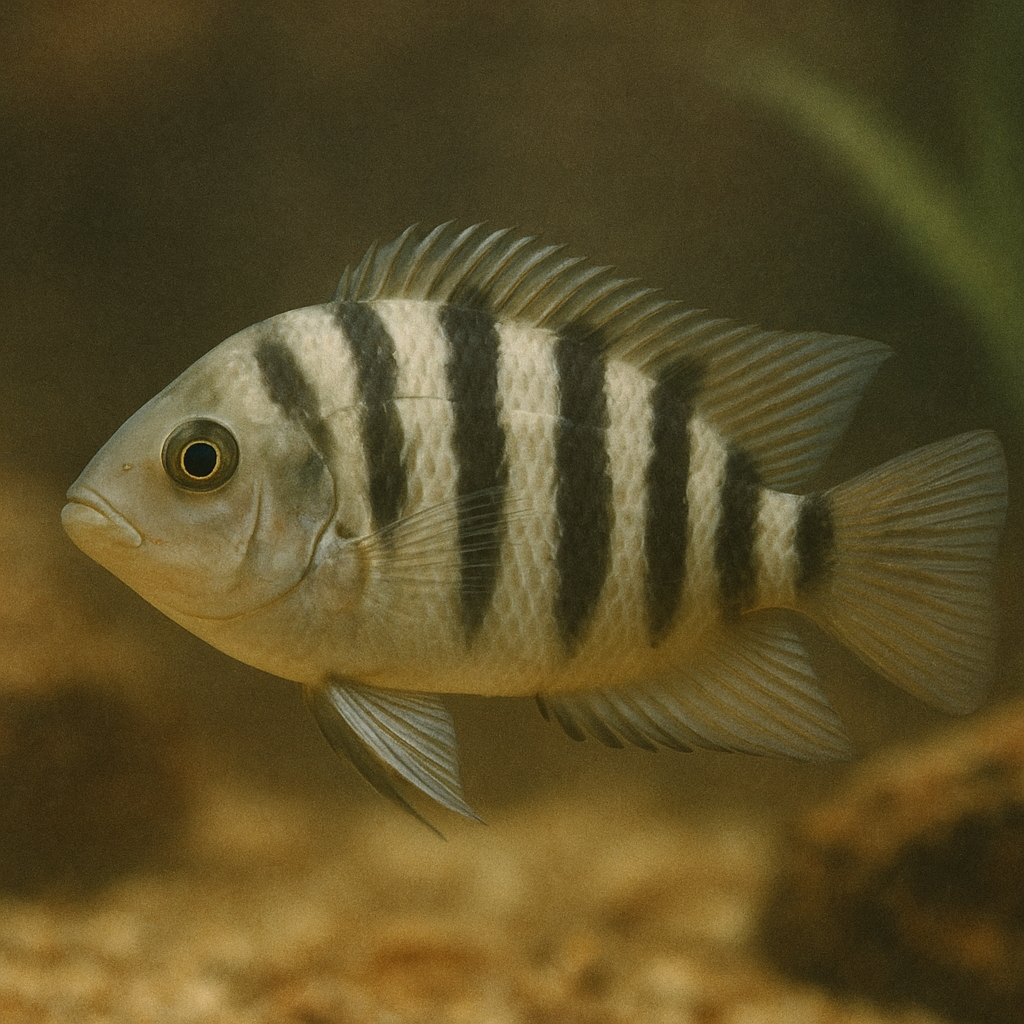The Convict Cichlid, Amatitlania nigrofasciata, is among the most enduring and recognizable species in the freshwater aquarium hobby. Its sharply contrasting black bars on a pale grey or pinkish background, combined with an assertive, intelligent demeanor, have made it a staple of domestic aquaria and educational exhibits alike.
The species belongs to the family Cichlidae, whose roots trace to an ancient radiation of percomorph fishes. Within this lineage, the closest extant relatives of cichlids are believed to be the Pomacentridae—the marine damselfishes. The resemblance is more than superficial: both families exhibit territoriality, nesting behaviors, and biparental care. In the Convict Cichlid, one finds a freshwater echo of the coral reef damselfish—smaller in size perhaps, but no less committed in its guardianship of eggs and fry.
The ancestors of today’s Central American cichlids are thought to have entered the region from South America via an ancient freshwater corridor formed when tectonic shifts and rising landmasses began shaping the Isthmus of Panama. Some paleobiological models suggest that estuarine environments, created where rivers met warm, shallow marine inlets, allowed for gradual adaptation to freshwater life. From these transitional zones, early cichlids ascended rivers and settled in isolated inland basins—crater lakes, rift valleys, and stream networks where speciation continued.
In the case of the Convict Cichlid, distribution is centered in the volcanic and alluvial waterways of southern Guatemala, El Salvador, Honduras, and Nicaragua. It is frequently observed in the Río Lempa drainage, the crater lake of Amatitlán, and in the clear, alkaline lakes of Xiloá and Apoyo. The geology of these systems—characterized by porous limestone, geothermal inflow, and modest buffering capacity—results in stable, oxygen-rich water with moderate hardness. The species is well adapted to these conditions and tolerates a wide range of temperatures and mineral concentrations, a trait which has no doubt contributed to its success in both wild and captive environments.
In terms of behavior, the Convict exhibits a level of parental complexity rare even among cichlids. Breeding pairs form strong monogamous bonds, share responsibility for egg fanning and fry herding, and defend their territory with coordinated vigilance. The fry respond to visual and chemical cues from their parents, and the entire brood may be moved between prepared nesting cavities in response to perceived threats. Laboratory studies have confirmed these behaviors persist across generations, even in domesticated strains, suggesting a strong genetic basis for social organization.
Selective breeding over the past several decades has produced leucistic and xanthic morphs with white, pink, and golden coloration. Though these lack the wild form’s cryptic camouflage, they retain the characteristic shape, activity level, and parental attentiveness of their ancestors. In this way, the Convict Cichlid has transitioned from streamside root tangles and submerged lava rocks to aquaria framed by tile and glass, taking up residence in classrooms, lobbies, and living rooms across the globe.
Its journey—from marine ancestor to freshwater pioneer to a symbol of captive aquatic life—illustrates both the resilience of evolutionary design and the enduring appeal of natural history. Compact, bold, and dependable, Amatitlania nigrofasciata remains an ideal species for both the hobbyist and the observer seeking to understand fish behavior through direct, ongoing observation.
